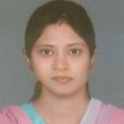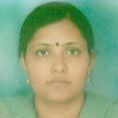International Journal of Intelligent Systems and Applications (IJISA)
IJISA Vol. 5, No. 2, 8 Jan. 2013
Cover page and Table of Contents: PDF (size: 512KB)
Simulation of Fuzzy Logic Based Shunt Hybrid Active Filter for Power Quality Improvement
Full Text (PDF, 512KB), PP.96-104
Views: 0 Downloads: 0
Author(s)
Index Terms
Hybrid Active Filter, Total Harmonic Reduction, Power Quality, Fuzzy Logic Control
Abstract
This paper deals with the implementation of fuzzy logic based Shunt Hybrid Active Filter (SHAF) with non-linear load to minimize the source current harmonics and provide reactive power compensation. Comparison with Proportional Integral (PI) based SHAF is also analyzed. Shunt Hybrid Active Filter is constituted by Active Filter connected in shunt and shunt connected three phase single tuned LC filter for 5th harmonic frequency with rectifier load. The Active Filtering System is based on Synchronous Reference Frame. The proposed fuzzy logic based control strategy improves active filter operation and reduces the selective harmonic contents. The control strategies are demonstrated through MATLAB Simulated Environment.
Cite This Paper
Sakshi Bangia, P R Sharma, Maneesha Garg, "Simulation of Fuzzy Logic Based Shunt Hybrid Active Filter for Power Quality Improvement", International Journal of Intelligent Systems and Applications(IJISA), vol.5, no.2, pp.96-104, 2013. DOI:10.5815/ijisa.2013.02.12
Reference
[1]M. Rastogi, N. Mohan, and A.-A. Edris, “Hybrid-active filtering of harmonic currents in power systems,” IEEE Trans. Power Delivery, vol. 10,no. 4, pp. 1994–2000, Oct. 1995.
[2]H. Fujita and H.Akagi, “A practical approach to harmonic compensation in power system-series connection of passive, active filters,” IEEE Trans. Ind. Applicat., vol. 27, no. 6, pp. 1020–1025, Nov./Dec. 1991.
[3]H. Fujita and H.Akagi, “A new power line conditioner for harmonic compensation in power systems,” IEEE Trans. Power Delivery, vol. 10, no. 3, pp.1570–1575, Jul. 1994.
[4]H. Fujita and H.Akagi, “A hybrid active filter for damping of harmonic resonance in industrial power system,” IEEE Trans. Power Electron., vol. 15, no. 2, pp. 215–222, Mar. 2000.
[5]S. Bhattacharya, P.-T. Cheng, and D. M. Divan, “Hybrid solutions for improving passive filter performance in high power applications,” IEEE Trans. Ind. Application, vol. 33, no. 3, pp. 732–747, May/Jun. 1997.
[6]H. Akagi, “New trends in active filters for power conditioning,” IEEE Trans. Ind. Application., vol. 32, no. 6, pp. 1312–1320, Nov./Dec. 1996.545–557, Apr. 1998.
[7]K. Al-Haddad, A. Chandra, B. Singh, and B. N. Singh, “An improved control algorithm of shunt active filter for voltage regulation, harmonic elimination, power-factor correction, and balancing of nonlinear loads,” IEEE Trans. Power Electron., vol. 15, no. 3, pp. 495–507, May 2000.
[8]L. Gyugyi and E. C. Strycula, “Active ac power filters,” in Proc. IEEE IAS Meeting, 1976, pp. 529–535.
[9]H.Akagi “A medium voltage transformerless AC/DC Power Conversion System Consisting of a Diode Rectifier and a Shunt Hybrid Filter” IAS Annual meeting,Vol.1,pp78;85,Oct.2002
[10]Bhim Singh,Vishal Verma,”An indirect current control ofhybrid power filters for varying loads”,IEEE Transactions on power delivery vol. 21 no.1 Jan2006
[11]S. Bhattacharya, D. Divan and B. Banerjee, “Synchronous frame harmonic isolator using active series filter,” EPE-Firenze, Vol. 3, pp. 30-35, 1991.
[12]P. Kirawanich and R. M. O’Connell, “Fuzzy Logic Control of an Active Power Line Conditioner,” IEEE Trans-actions on Power Electronics, Vol. 19, No. 6, November 2004, pp. 1574-1585. doi:10.1109/TPEL.2004.836631
[13]E.E.EL-Khoy, A. EL-Sabbe, A.El-Hefnawy, and Hamdy M.Mharous, Three phase active power filter based on current controlled voltage source inverter, Electrical Power and Energy Systems,28(2006),537-547.


